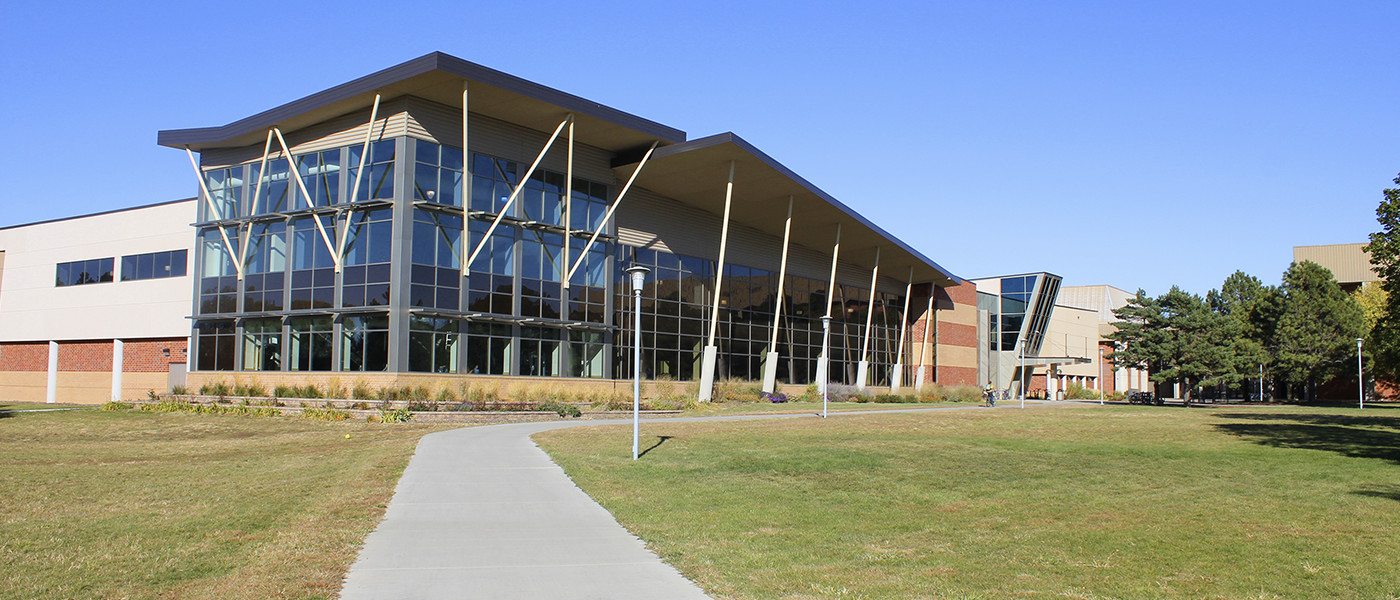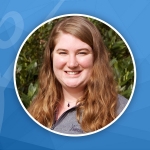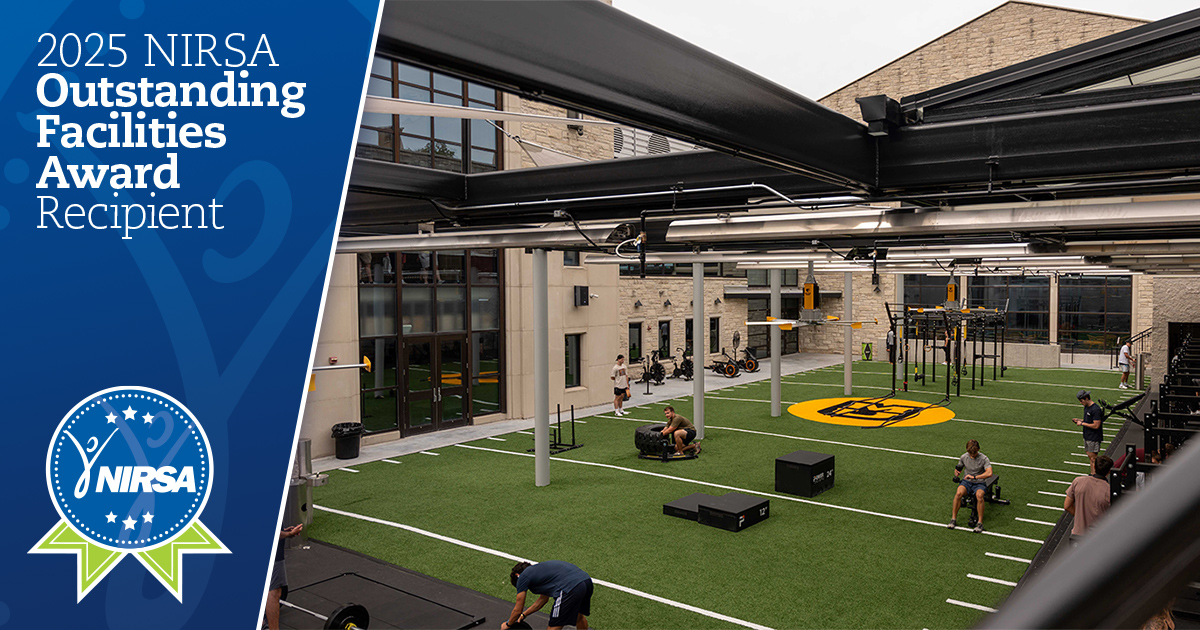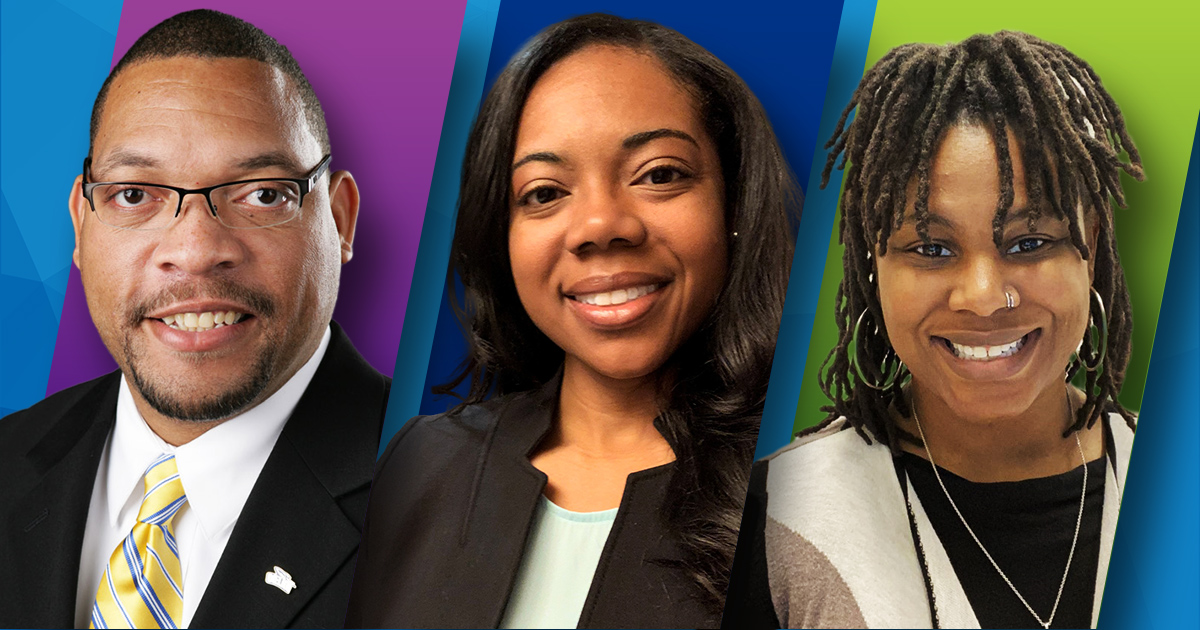The need to create a culture of integrated wellness is emerging on college campuses as both a new concept and a re-imagining of traditional recreation offerings. Leading facilities often encompass preventive as well as reactive services including student health, counseling centers, and programming designed to appeal to historically-underserved populations.
The trend extends beyond facility design and usage. It marks a positive, health-conscious change in university reporting structures and goals. Campus recreation is being tasked by universities to implement this new concept of wellness on college campuses. Through recreation departments and personnel, many schools are embracing innovation regarding wellness. South Dakota State University (SDSU) is one of the schools at the forefront of this emerging trend in collegiate recreation.
While SDSU opened the doors to its new Wellness Center in 2008, it has a long legacy of collaborative wellness dating back to the 1980s when the university partnered closely with the Brookings Hospital to monitor aspects of health beyond exercise. “We call our building a Wellness Center because we focus on all the dimensions of wellness, rather than just the physical dimensions,” says Shari Landmark, Interim Director of the Wellness Center.
The SDSU Wellness Center staff actively work together to target programming to seven different dimensions of wellness, including physical, social, environmental, financial, spiritual, emotional, and intellectual. Building upon their long legacy of collaborative wellness, SDSU now uniquely serves its students by offering a “one-stop-shop for overall wellness on campus.” It also takes its work beyond campus and into the community.
Pioneers in collaborative wellness
In the 1980s, Dr. Charles ‘Scotty’ Roberts Jr., M.D. at the Brookings Medical Clinic and Dr. Kenneth Cooper, founder of The Cooper Institute in Dallas, Texas recognized that health and wellbeing went beyond exercise and they worked together to build a comprehensive wellness program at SDSU. That was the start of making their future-thinking vision a reality.
Their visionary program concentrated on participants being educated about their overall indicators of health. Supported through SDSU’s Health, Physical Education, and Recreation Department, they—with the help of students—carried out intense cardiovascular sub-max tests and blood lipid panel tests, and also did testing on muscle endurance, muscle strength, flexibility, blood pressure, and resting heart rate. The university worked closely with the Brookings Hospital to ensure that all patrons were physically fit or under a doctor’s care prior to participating in the program. This program was a first step in wellness collaboration at SDSU.
At the time, the Recreation Department still reported directly to the Athletics Department. Recreation utilized Athletics’ track and weight room and housed a “Wellness Shop” in Athletics’ facilities. The fitness and recreation areas were located in separate buildings from the health clinic and counseling services, and there was no intentional focus on health promotion. This made attempted collaboration across wellness areas challenging.
Turning collaborative wellness into a one-stop shop for the community
SDSU’s new Wellness Center facility, built in 2008, represents a culmination of a long legacy of wellness collaboration. It has evolved into a one-stop shop for all student and community wellness needs. While faculty and staff had tried for years to get the facility off the ground, student advocates were the true catalyst behind the success of the new $12-million facility. In addition to $4 million in contributions from private donors, students voted for a $3.25 per credit hour general activity fee (GAF) increase in their own student fees to raise the money for construction.
The Wellness Center now features facilities for fitness and recreation—including personal training—fitness classes, and intramurals and sports clubs. Beyond these standard recreation center offerings, the Wellness Center also offers nutritional services including an onsite dietitian, health promotion services headed up by SDSU’s first health promotion program coordinator, a health clinic open to students, family planning services, counseling services, and even a laboratory and pharmacy.
A model that uniquely benefits students
This one-stop model allows staff from different wellness areas to creatively collaborate to offer unique programs and services to students both inside and outside of the Wellness Center. Amy Cornish, Facilities Graduate Assistant at the SDSU Wellness Center, has seen the way the Wellness Center bolsters student success every day. Originally from Washington and a graduate of Western Washington University, Amy was drawn to SDSU not only because she wanted to broaden her collegiate recreation perspective and experience, but also because Brookings would give her a chance to experience life in a very different part of the country.
In her time at SDSU, Amy has observed the unique ease with which students are able to access all types of wellness services. “Having all the services under one roof makes it that much easier for students to get the ones they need,” she explains.
Amy is an integral player in a small staff team that makes it easier to build relationships with students and encourage them one-on-one to take advantage of the wide offering of services. “As everyone works together with the goal of overall wellness in mind, all three areas of the Wellness Center provide students with a lot more opportunities and resources.”
Amy has also noticed that having all the services physically located in one place has made a huge impact. For “a lot of students from very small Midwestern towns, coming to Brookings can be very overwhelming,” she says. “Some students even live in residence halls that are larger than their entire hometowns. The fact that all the services for health and wellness are simply located together eliminates a lot of barriers for students to access services.”
As an employee, Amy has come to understand the breadth of change some students are facing entering college at SDSU; to students in a new town, new campus, and new community, a one-stop wellness shop is crucial to maintaining or initiating wellness habits.
SDSU goes as far as to extend this collaborative wellness model beyond the Wellness Center into every aspect of student life, even creating a dedicated wellness space in one of the dormitories. Schultz Hall, the closest residence hall to the Wellness Center, features a living and learning wellness community on its fourth floor that is aptly named the Healthy Living and Learning Community. Students are able to apply to this unique community when they apply to SDSU.
Students living in the Healthy Living and Learning Community are not just those who wish to someday join the collegiate recreation or health and wellness fields, but anyone who aims to prioritize incorporating wellness into their everyday lives. Healthy Living and Learning Community residents meet with the Wellness Center’s fitness coordinator twice a month, participate in wellness education programs, and even enjoy an overnight lock-in in the Wellness Center. Not surprisingly, the Healthy Living and Learning Community is the only hall on campus with a 100% retention rate.
While the SDSU Wellness Center actively serves about 13,000 students and is open to SDSU faculty and staff, many aspects are open to the entire community of Brookings. In fact, the Wellness Center strives to build habits in its members no matter what age; it provides programming that serves persons aged 2–92. In addition to fitness and recreation facilities, the pharmacy (also acting as a learning lab for students), and the family planning services are open to the community. Currently, the Wellness Center has about 1,200 community memberships.
Overcoming challenges
The transition to the Wellness Center, however, has not been without challenges. There have been constant opportunities for growth. Moving towards a model of departments working together with a common mission has been a long, ongoing process. Marketing and promotion that brands the common identity of a unified department across campus has been crucial.
Additionally, Wellness Center staff have also adapted their marketing and promotion to better cater to the broader scope of participants. They have found that different audiences require different mediums of advertising; while community members are most receptive to newspaper and radio, students are targeted with social media and on-campus advertising.
The broad scope of programs and services offered by the SDSU Wellness Center also provides logistical and operational challenges for administration and staff. With a huge scope of programming and promotion, and with so many activities for students to choose from, Amy Cornish notes that “it can be hectic to find sufficient time and space for everyone in every program area to secure the opportunity to continue doing what they are doing.” Adapting to a new way of budgeting has also been a challenge. “Budgeting for the entire department has been tricky, due to the fact that our resources come in as cash, general activity fees, special appropriations, etc.,” notes Shari.
To overcome this particular obstacle, new processes have been devised. The first stage of budget planning now begins at the ground level, with each program area; they each develop individually their projected operating expenses, wages, and revenue projections. Information from each program area is then placed in either the fitness and recreation budget or student health clinic and counseling budget. These budgets are all then synthesized into one final budget.
Despite this lengthier process, the Wellness Center has realized a positive impact on revenue. “If each area can help sell another area or help retain a student or member, that impacts revenue for both the department and the university,” explains Shari. While the one-stop-shop model creates a particular set of obstacles, these challenges are overall seen as positive problems to face as a team.
Managing the wellness model with success
So what’s the magic behind the success of this collaborative model? First and foremost, it is key to have a shared vision where the priority is student health and wellbeing. “We have an overall goal of instilling good healthy habits in student lives while they are here at SDSU. This is done with the hopes that they will continue to build these healthy habits once they leave the university,” says Shari. “If we didn’t make an intentional effort to assure that students succeed,” adds Nicole McKibben, the Wellness Center’s first Programming & Promotions Coordinator, “we wouldn’t be doing our jobs. Our number one goal for the students is for them to graduate. With that achieved, other successes will come.”
With student success at the forefront of every program areas’ success, Wellness Center staff engage a holistic, multi-dimensional approach which addresses the needs of students and provides a seven-dimension model that they can carry with them for life. “By approaching student success holistically, we teach students to manage time, eat right, communicate, be fiscally responsible, and manage relationships,” explains Shari.
Moreover, she says, “Our NIRSA family treats our students as family. It is our goal to see each one of our students graduate and succeed in life.” In line with this philosophy, the Wellness Center team sets goals and measures success as a team. SDSU’s five-year strategic plan, “Impact 2018,” sets certain goals to achieve for the greater good of the university and the Division of Student Affairs. Once these goals were set, the Wellness Center then set goals for each program area. These include financial, access, and programmatic goals, which the Wellness Center team now strives to achieve together.
Finally, the Wellness Center succeeds by a willingness to collaborate across all program areas. It believes that this collaboration is as crucial to the success of students at SDSU as it is to professionals in the field. The Leadership team consists of the Assistant Director of Counseling Services, the Associate Director of the Student Health Clinic and Family Planning Clinic, and Assistant Director for Fitness & Recreation programs, whom is filling in as the Interim Wellness Center Director. These three meet weekly, encouraging collaboration and balance across the different program areas. From a marketing standpoint, eliminating silos and emphasizing the whole aspect of the Wellness Center is crucial to the new brand. This includes marketing all aspects of the Wellness Center equally. “The underlying theme throughout the building is that we are one,” says Nicole.
The Wellness Center team is also mindful to practice and model elements of healthy living and collaboration in and out of the workplace. Employees have the opportunity to flex their schedules and team collaboration extends into collective lunch breaks across program areas.
Also, while each program area nominates an employee of the month, a group from all program areas coordinates the selection of a single finalist. At the end of every month, staff from all program areas come together and provide potluck-style food at a student appreciation BBQ, modeling the collaborative attitude that makes the Wellness Center tick for the next generation of practitioners.
What’s next for wellness at South Dakota State?
SDSU is rightfully proud to have been among the first Wellness Centers across the nation to try this integrated approach where health, wellness, and recreation programs are all located in one building. But SDSU’s work isn’t done yet. In response to the growing needs and interests of students, the Student Senate recently passed another $4.50 per credit hour GAF to fund a $14 million addition to the Wellness Center. SDSU hopes to break ground in Summer or Fall 2017. When asked about the specific plans for the addition, the answer is easy. “More space for everybody,” says Nicole.
Reflecting on the history and future of the Wellness Center, Shari reflects that “we would like to be recognized as a leader and innovator in the field of college health, recreation, and wellness.” It’s clear that they’re already well on their way.
Learn more
This member spotlight is part of an extended series exploring the emerging trend of integrated wellness in campus recreation. NIRSA’s emerging trends in collegiate recreation project is supported by Precor.
For more information about the Wellness Center at South Dakota State University, please contact Shari Landmark, Interim Director of the Wellness Center. If you have questions about NIRSA’s Emerging Trends in Campus Recreation project, please contact Ruben Guzman, NIRSA’s Research Coordinator.
The conversation about creating a culture of health and wellbeing will continue at the 2017 NIRSA Annual Conference. Registration will open in early November for the 2017 NIRSA Annual Conference & Campus Rec and Wellness Expo, February 21-24, in National Harbor, Maryland.
Photos courtesy of South Dakota State University
Alice Kersting is currently the Special Projects Coordinator at NIRSA. She can be reached at ajkersting@gmail.com.








